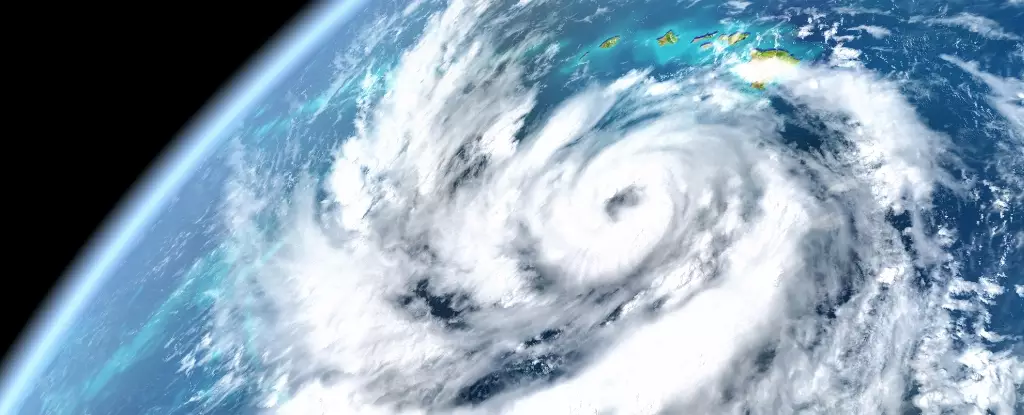In an era where environmental unpredictability and climate crises dominate global conversations, Microsoft’s newly developed AI model, known as Aurora, emerges as a groundbreaking solution that could redefine the future of weather forecasting. With the capacity to outshine conventional forecasting methods, Aurora exhibits a remarkable ability to predict air quality, weather patterns, and even the treacherous trajectories of tropical storms. These capabilities are particularly noteworthy given the pressing urgency to comprehend the nuances of climate change and its consequential impacts on weather phenomena. The implications extend beyond mere accuracy; they touch the very core of public safety and resource management.
Aurora’s distinctions lie not just in its predictive accuracy, outperforming esteemed institutions like the US National Hurricane Center, but also in its efficiency. Traditionally, weather forecasting has relied on first principles of physics—conservation of mass, momentum, and energy—which can be a computational drain on resources. In stark contrast, Aurora’s algorithm, trained solely on historic data, promises forecasting with computational demands significantly lower—several hundred times cheaper than current methods. This offers a tantalizing glimpse into a future where accurate climate modeling is accessible not just to affluent countries, but potentially to developing nations struggling with their own climate crises.
Transformative Potential of AI in Meteorology
The research highlighting Aurora’s capabilities, as published in the prestigious journal Nature, is more than just a technical triumph—it’s a societal call to action. The urgency for innovations in weather forecasting is underscored by the ramifications of climate events that directly impact countless lives. The 2023 hurricane season, for example, demonstrated how integrated AI technologies could provide critical foresight in identifying dangerous storms with unprecedented clarity and speed. Doksuri, a devastating typhoon in the Philippines, was accurately predicted by Aurora’s model, showcasing the potential to save resources and lives through timely evacuation notices and more informed public safety measures.
Moreover, the advent of AI in weather forecasting heralds a significant shift in reliance on technology. The traditional systems often struggled under the weight of complex, high-fidelity simulations, which, despite their depth, meant longer wait times for results. Aurora’s agility avails quicker updates, allowing emergency management agencies and everyday citizens to respond promptly to changing conditions. With so much at stake in the arena of climate safety and disaster preparedness, we cannot afford to cling to outdated methods.
Challenges and Reservations in Adopting AI Technology
Despite such breakthroughs, it is crucial to temper our enthusiasm with caution. The astonishing success of Aurora prompts critical questions about the ethical ramifications and dependencies that come with AI technology. As governments worldwide rush to adopt AI-driven solutions, the potential for algorithmic biases or inaccuracies necessitates stringent oversight. Furthermore, the very technology that assists us might also set a precedent for misinformation if misapplied. With advanced systems generating 10-day forecasts at a higher accuracy than established methods, how do we confront the perennial question of accountability when human lives depend on these predictions?
The competitive landscape is equally contentious; multiple AI models, such as Huawei’s Pangu-Weather, are emerging on the global front, establishing a technology race centered on an essential public concern. Without rigorous regulatory frameworks, the risk of monopolistic practices affecting resource distribution and ethical use becomes alarmingly high. Thus, while AI innovations can usher in unprecedented advances, a measured approach encapsulated by a commitment to inclusivity and transparency is vital.
The Need for Collaborative Governance
As we stand on the threshold of this promising technological renaissance in weather forecasting, it’s essential to position AI as a tool in the quest for information rather than an infallible oracle. International collaboration among various countries is imperative to ensure diverse perspectives shape the trajectory of these innovations. Thus, fostering an atmosphere where researchers and government officials can discuss the complexities of AI in meteorology could mitigate the risks of scientific overreach while maximizing positive societal outcomes.
Innovation contingent on ethical frameworks can lead to a future where policymakers are better equipped to respond to the intricacies of climate change, thereby empowering communities worldwide. Embracing the potential of AI technologies like Aurora could play a crucial role in this evolution—but only if we remain vigilant against their pitfalls. The conversation on AI in meteorology is just beginning; how we navigate this uncharted territory will determine its ultimate impact on humanity.

